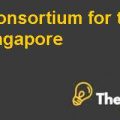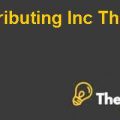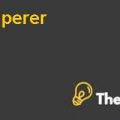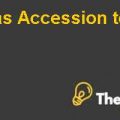
Rationale/Support:
Sales:
First Class Trading Corporation Sales in the year of 2004 was $6,297 giving the company loss of $9543. In the year of 2005 the company had done sales of $29,372 bearing the loss of $5991. The company had gone through with losses in the year of 2004 and 2005. Now in 2006 they are having a contract of two schools giving the sales of $22000 that is each school is giving the sales of $11000 with the liability on Board of Director as if they won’t do well this time they will be out of the business.
Profit/Loss:
Casting an eye on Profit/Loss statement the First Class Trading Corporation wanted to capture 5% market share of Quebec Private Elementary Schools by the year of 2008. Moreover, they desired to maintain the marketing expenses at 5% of sales. On the other hand the First Class Trading Corporation wanted to maintain gross margins at 30% until 2009 in order to cover all fixed/variable costs. They are offering the full stocked bag at the price of $90 at retail stores while the cost per bag is $63, so they are enjoying the profit of $27 on each bag. The price on which competitors are selling the bag is $137 so the First Class Trading Corporation is selling at lower prices than competitors.
Company Goals:
As far as the company’s goals are concerned the First Class Trading Corporation has Projected Contribution Margins. In the year of 2006 (recent) they are in Contract with two schools within franchise of 13 Private Elem Schools. The goal of the First Class Trading Corporation is to obtain the contracts with 7-10 (50-75%) schools within franchise of 13 schools and desired to capture the 5% of Quebec Private Elementary Market.
Break Even Analysis:
Keeping an eye on current project of the First Class Trading Corporation they are getting $11000 from each school and $90 by selling one fully stocked bag to a child. To Reach Projected Goals the firm has to reach the breakeven. In order to reach breakeven they should charge $126 for a fully stocked bag from an each child. The firm can raise the prices as parents were paying $138 for these accessories approximately. While they are providing the convenience to parents of not searching the required accessories they can easily raise the price of K12.
Conclusion:
Looking at the situation there can be three alternatives at a moment.
- Raise the price of K-12, expand the target market, and increase advertising and promotion budget.
- Continue with the same price and target market, but alter the advertising and promotion strategy.
- Stop all business operations.
The First Class Trading Corporation should apply the focused segmentation approach to forging a strategic union with Private Elementary Schools and their corresponding constant suppliers. This can be attained through a concentrated personal selling campaign to facilitate growth and minimalizeof risk. This will also allow them to narrowly segment and position themselves to meet overlooked consumer needs.Should follow the second alternative.....................................
This is just a sample partial case solution. Please place the order on the website to order your own originally done case solution.












